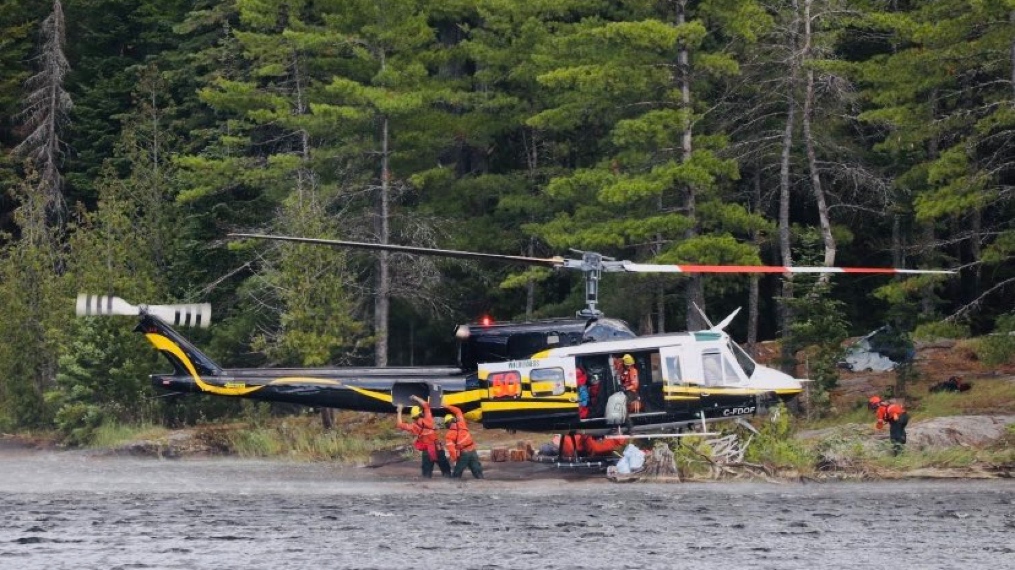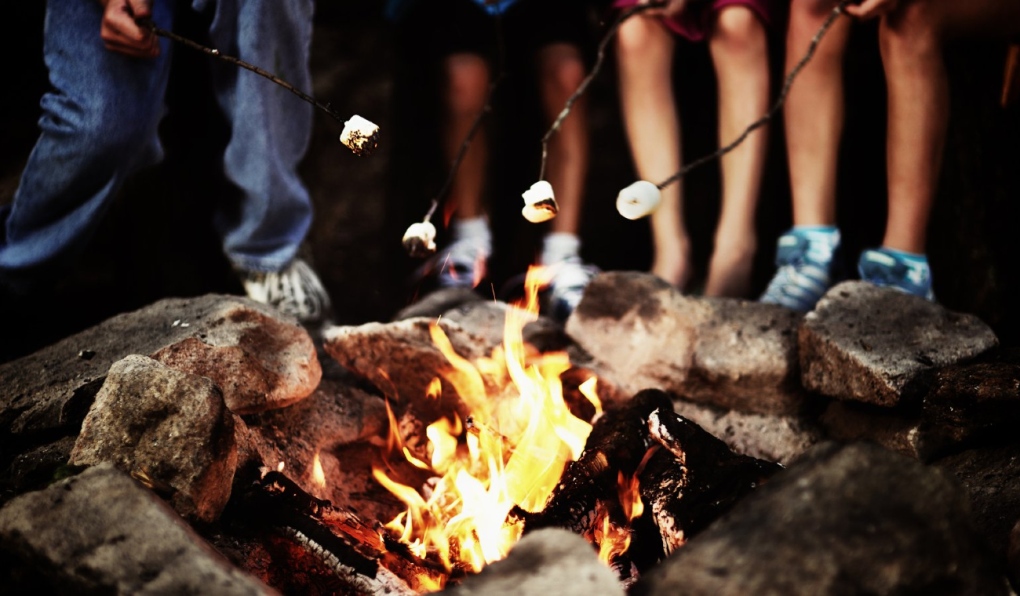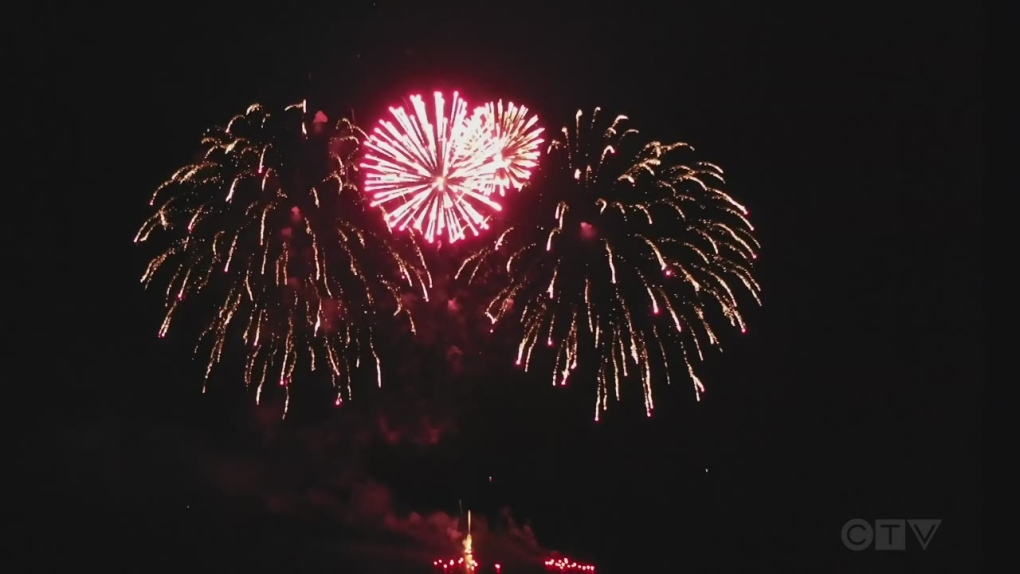Wildfire risks increasing across northern Ont.
There 27 active wildfires in the Northeast Region and fire hazard risk across the region is moderate to high, according to Sunday's update from Aviation, Forest Fire and Emergency Services (AFFES).
Of these active fires, four are not under control, five are being held, 10 are under control and 27 are being observed, the report said. 18 new fires were reported in the Northeast Region this weekend.
“The wildland fire hazard is moderate to high across the Northeast Region with one small pocket of extreme fire hazard centered around the community of Thessalon,” said emergency officials.
Sudbury 31 is the largest new fire in the region – it is not under control. Sudbury 7, confirmed on Aug. 5, is located approximately 5 kilometers west of Twin Lake in French River Provincial Park and is listed as 0.7 hectares in size, according to the update.
- Download the CTV News app now and get local alerts on your device
- Get local breaking news and updates sent to your email inbox
NORTHWEST REGION
There 56 active wildfires in the Northwest Region with wildland fire hazard mostly moderate to high across the region, according to the AFFES update.
“Some pockets of extreme hazard remain around Red Lake and Slate Falls Nation Reserve, while an area of low hazard extends from Dryden to Lake Nipigon and around Geraldton,” said emergency officials.
Of the active fires, 12 are not under control, six are being held, 11 are under control and 27 fires are being observed.
In Ontario, a fire classified as ‘being observed’ is being monitored to allow the ecological benefits of wildland fire to take place as it would in the natural environment without human intervention, the Ministry of Natural Resources and Forestry (MNRF) explained in a tweet last month.
“Initial attack crews have called 7 fires out in the past 24 hours,” said emergency officials, in the update.
Thunder Bay 43 confirmed Saturday and Red Lake 69 confirmed Sunday are the largest of the new fires in the northwest – both measuring 0.5 hectares. Thunder Bay 43 is located approximately 3.0 kilometres east of Quetico Park, near Bedivere Lake and is being held. Red Lake 69 is located approximately 18.4 kilometres west of Pakwash Lake, and 13.1 kilometres east of Longlegged Lake and is not yet under control.
Sioux Lookout 33 remains the largest and most significant fire in the region – it is still not under control. Sioux Lookout 33 is located on the western edge of Wabakimi Provincial Park and is 62,377 hectares in size.
“Crews continue to establish hose lines while helicopter bucketing operations provide support,” reads the report.
Nipigon 19 is located northwest of Ogoki Lake and Red Lake 28 is located 40 kilometers North of Lac Seul First Nation are 10,182 and 19,177 hectares respectively.
“Crews continue to work hot spots identified by infrared scanning,” said officials concerning both Nipigon 19 and Red Lake 28.
“Excellent progress is being made.”
 Firefighters continuing to work hot spots across the Ontario fire region. (Supplied)
Firefighters continuing to work hot spots across the Ontario fire region. (Supplied)
FIRE BANS
The Restricted Fire Zone (RFZ) previously in place for the entire Fire Region of Ontario was lifted on July 11 and no major northeastern municipalities have fire bans currently in place.
 An undated photo of people roasting marshmallows over a campfire. (Image courtesy of Ontario Forest Fires/Twitter)“Lifting the RFZ does not mean we can let our guard down when it comes to preventing human-caused fires,” said emergency officials.
An undated photo of people roasting marshmallows over a campfire. (Image courtesy of Ontario Forest Fires/Twitter)“Lifting the RFZ does not mean we can let our guard down when it comes to preventing human-caused fires,” said emergency officials.
“We all need to remain vigilant and keep safety top of mind when having outdoor fires.”
FIREWORKS
 A Dream Catcher Fireworks' display on the beautiful shores of Lake Wanapitei in northeastern Ontario in 2020. (File photo)With wildland fire hazard levels rising across the province fire safety officials are recommending caution with regards to fireworks. Fireworks are prohibited by some municipalities – it is important to check your local bylaws.
A Dream Catcher Fireworks' display on the beautiful shores of Lake Wanapitei in northeastern Ontario in 2020. (File photo)With wildland fire hazard levels rising across the province fire safety officials are recommending caution with regards to fireworks. Fireworks are prohibited by some municipalities – it is important to check your local bylaws.
However, several communities are moving ahead with their planned Civic Holiday fireworks displays.
"Fireworks are an exciting part of summer, but practice fire safety. During periods of hot, dry weather, sparks and embers can start wildland fires," said the MNRF in a tweet, last week.
“Only launch fireworks over a fire safe area and always keep fire suppression equipment on hand.”
"A person that starts a wildland fire from failing to extinguish hot residue from fireworks can be charged under the (Forest Fire Prevention) act and may be held responsible to pay the total cost of putting the fire out," the MNRF explained in June.
Under the Forest Fire Prevention Act, it is illegal to leave any discharge residue from a firearm, flare, firework or explosive in or within 300 metres of a forest area unextinguished.
THE 2023 FOREST FIRE SEASON
The 2023 forest fire season has been a busy one in Ontario, with a total of 595 confirmed fires reported so far this year, above the 10-year average of 523 fires for the same time period – and significantly more than the 174 total fires reported in 2022.
STAY UP-TO-DATE
CTVNewsNorthernOntario.ca will continue to monitor the ever-changing situation and will provide new information as it becomes available. Check back often for updates.
For a closer look at fire hazard conditions in your area, view the Ontario Forest Fire Info Map online here.
CTVNews.ca Top Stories

5 rescued after avalanche triggered north of Whistler, B.C. RCMP say
Emergency crews and heli-skiing staff helped rescue five people who were caught up in a backcountry avalanche north of Whistler, B.C., on Monday morning.
Quebec fugitive killed in Mexican resort town, RCMP say
RCMP are confirming that a fugitive, Mathieu Belanger, wanted by Quebec provincial police has died in Mexico, in what local media are calling a murder.
Bill Clinton hospitalized with a fever but in good spirits, spokesperson says
Former President Bill Clinton was admitted Monday to Georgetown University Medical Center in Washington after developing a fever.
Trump again calls to buy Greenland after eyeing Canada and the Panama Canal
First it was Canada, then the Panama Canal. Now, Donald Trump again wants Greenland. The president-elect is renewing unsuccessful calls he made during his first term for the U.S. to buy Greenland from Denmark, adding to the list of allied countries with which he's picking fights even before taking office.
UN investigative team says Syria's new authorities 'very receptive' to probe of Assad war crimes
The U.N. organization assisting in investigating the most serious crimes in Syria said Monday the country’s new authorities were “very receptive” to its request for cooperation during a just-concluded visit to Damascus, and it is preparing to deploy.
Pioneering Métis human rights advocate Muriel Stanley Venne dies at 87
Muriel Stanley Venne, a trail-blazing Métis woman known for her Indigenous rights advocacy, has died at 87.
King Charles ends royal warrants for Ben & Jerry's owner Unilever and Cadbury chocolatiers
King Charles III has ended royal warrants for Cadbury and Unilever, which owns brands including Marmite and Ben & Jerry’s, in a blow to the household names.
Man faces murder charges in death of woman who was lit on fire in New York City subway
A man is facing murder charges in New York City for allegedly setting a woman on fire inside a subway train and then watching her die after she was engulfed in flames, police said Monday.
Canada regulator sues Rogers for alleged misleading claims about data offering
Canada's antitrust regulator said on Monday it was suing Rogers Communications Inc, for allegedly misleading consumers about offering unlimited data under some phone plans.

































